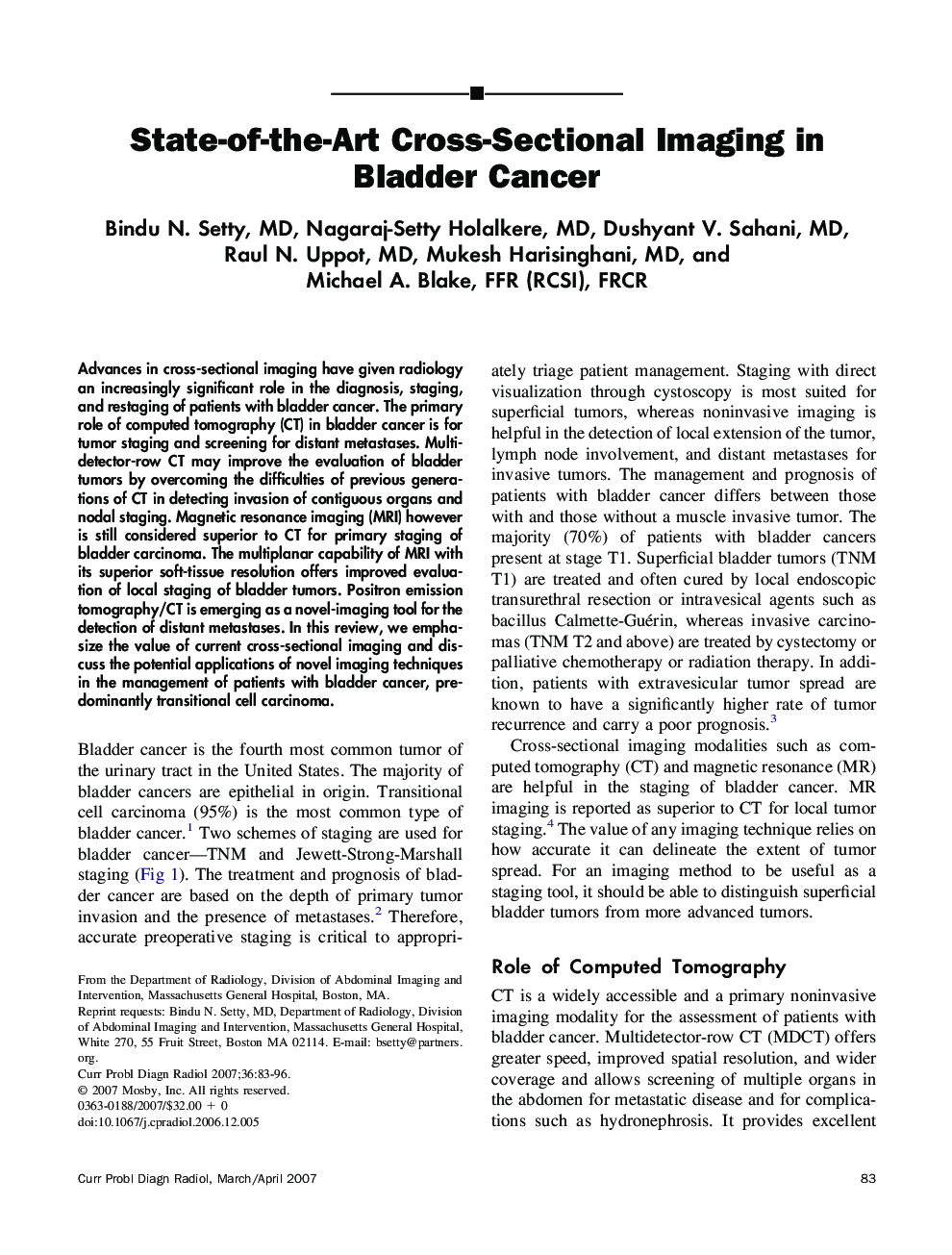| Article ID | Journal | Published Year | Pages | File Type |
|---|---|---|---|---|
| 4223937 | Current Problems in Diagnostic Radiology | 2007 | 14 Pages |
Advances in cross-sectional imaging have given radiology an increasingly significant role in the diagnosis, staging, and restaging of patients with bladder cancer. The primary role of computed tomography (CT) in bladder cancer is for tumor staging and screening for distant metastases. Multidetector-row CT may improve the evaluation of bladder tumors by overcoming the difficulties of previous generations of CT in detecting invasion of contiguous organs and nodal staging. Magnetic resonance imaging (MRI) however is still considered superior to CT for primary staging of bladder carcinoma. The multiplanar capability of MRI with its superior soft-tissue resolution offers improved evaluation of local staging of bladder tumors. Positron emission tomography/CT is emerging as a novel-imaging tool for the detection of distant metastases. In this review, we emphasize the value of current cross-sectional imaging and discuss the potential applications of novel imaging techniques in the management of patients with bladder cancer, predominantly transitional cell carcinoma.
